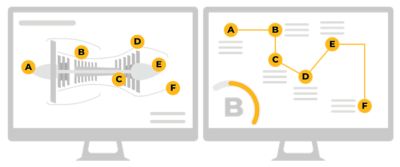Ansys 部落格
June 29, 2023
克服工程挑戰,追求永續推進
未來數十年,商用航空產業將由追求更永續的推進系統來定義。但隨著產業著手定義並開發這些新設計,他們必須克服各種重大的工程挑戰。為了達到此目的,他們必須仰賴工程解決方案來簡化設計流程、改良產品效能,並減少代價高昂的開發延遲情況。

多軌道、多時間線的方法
起初,商用航空公司透過從傳統燃燒引擎轉換為電力推進系統,來探索提升航空永續性的可能。然而,現有電池技術的限制使得短期內無法進行轉換。為此,業界採取分段式的推進系統開發方法。此方法可讓他們在短期內以混合式電力系統的形式,真正實現提升永續性,並追求能源效率更高的電力與氫基系統。此種多軌道、多時間線的方法,也能讓航空公司創新並探索其產品的其他應用與市場。
在追求這些突破的同時,航空工程師也必須面對跨領域系統設計流程帶來的多種技術挑戰。本文將強調這些挑戰,並探討數位工程解決方案如何協助克服難題。
永續推進的工程挑戰
每項複雜的產品都有各自的工程挑戰,但全新的航空推進系統極為複雜,而且倚賴仍在發展中的技術。這表示這些工程挑戰需要跨領域的解決方案和取捨,而且必須評估整體系統。其中一些挑戰包括:
- 電動動力系統與系統整合。工程師必須使用整合式嵌入式控制功能來定義最佳的系統架構。他們也必須開發散熱管理、電源管理的廣泛需求,並確保系統的設計本質上安全無虞。
- 電力機械設計。定義與設計新的推進系統時,工程師必須做出取捨以滿足相互競爭的需求,同時將系統的安全性與效率最佳化。功率足以供大型客機使用的設計可能會產生散熱管理問題,需要更強大的冷卻系統,表示重量更重,因而可能影響其航程。工程師在尋求可行的系統時,必須謹慎地平衡這些取捨。
- 能源儲存與配送。電力推進系統和氫基系統會帶來不同的問題。帶有電池的電動系統必須在不過度影響系統的電力管理控制的情況下儲存和釋放能量。氫基系統最有可能以液態氫作為燃料,該液態氫必須在 -250 °C 的溫度下儲存,並能安全地流經系統至燃料電池,然後轉換為電能。
- 電力電子與控制設計。工程師必須確保新的推進系統能管理電力電子裝置,以因應不同的負載條件,同時確保高功率效能。他們需要能夠適應高頻切換,並符合認證標準的條件和負載適應性控制軟體及硬體。在飛行週期的任何階段中,設計團隊都必須避免對機上元件造成電磁干擾。

電動動力與系統整合:Ansys 解決方案讓工程師能夠建構設計模型並模擬其效能,以便工程師精簡系統架構,並滿足系統的競爭需求。
運用深入分析資料來克服挑戰
傳統的產品開發工具,通常依賴於離線試算表、文件和電子郵件,在過去幾十年中當公司更新和迭代現有的推進系統時,這些工具對他們來說已經足夠有效。但開發全新推進系統需要採用全新的方法。無論航空公司在追求更加永續飛行時面臨何種工程難題,數位工程解決方案都能為他們提供克服挑戰的途徑。

電力電子和控制設計:Ansys 工具的模擬能力可讓工程師在各種電力循環期間分析推進系統的效能,確保其散熱和電磁效應不會造成安全問題。
這些更進階的解決方案可讓工程團隊更深入瞭解設計開發初期的效能,進而能夠更快速地迭代和革新。工程師在進行系統架構最佳化、選擇有效的材料,以及在工程取捨之間取得平衡時,這些深入分析資料可協助他們做出更周全的決策。因此,這些資料可以減少設計錯誤,並降低建立可行的設計必須建構和測試的原型機數量。如此可縮短設計週期、降低成本,最終製作出更好的產品。
以先進的工程解決方案支援航空公司
Ansys 解決方案為航空公司提供所需的能力,以處理永續推進系統設計固有的工程挑戰。工程師可以利用這些解決方案從開發的最早階段建模和分析系統行為,並快速調整以確保最佳效能,捕捉設計原理並使其可追溯,這樣可以隨著產品生命週期的變化而不斷演進。這些解決方案能讓設計團隊及早識別系統的功能與安全需求,表示他們可以透過設計或控制軟體來解決潛在的故障問題,並更快速地引導設計通過認證。
工程師也可以使用 Ansys 解決方案的電機模板,這些模板為獨特設計提供了現成的開發起點。此外,他們還能利用整合式模擬工作流程解決方案功能來分析各個領域,以確保所有子系統在所有所需的操作配置中安全有效地相互作用。
Ansys 正在調整其數位工程解決方案,讓工程師能夠整合到航空公司推動的轉型,致力減少業界環境足跡。但無論是要改良燃料電池設計、模擬電池的散熱效能,或是最佳化與整合複雜的系統架構,這些解決方案都能協助他們以比傳統方法更有效率、更快、更具成本效益的方式達成目標。
永續性無疑正在推動商用航空的未來,但不確定哪些公司將在實現永續未來的過程中,扮演最重要的角色。對產業和環境而言,風險也很高。
把握永續航空的未來
航空公司若能快速定義並開發全新的高度複雜推進系統,並在競爭中搶先推出高品質的產品,就能在淨零碳排放活動中取得龐大優勢。Ansys 可為這些公司提供許多工具,並整合至所需的數位架構,克服這些產品帶來的複雜工程問題,並在該活動中建立領先地位。
閱讀白皮書「永續航空的混合式與電力推進系統」,瞭解這些次世代推進系統的驅動力、技術挑戰與解決方案。